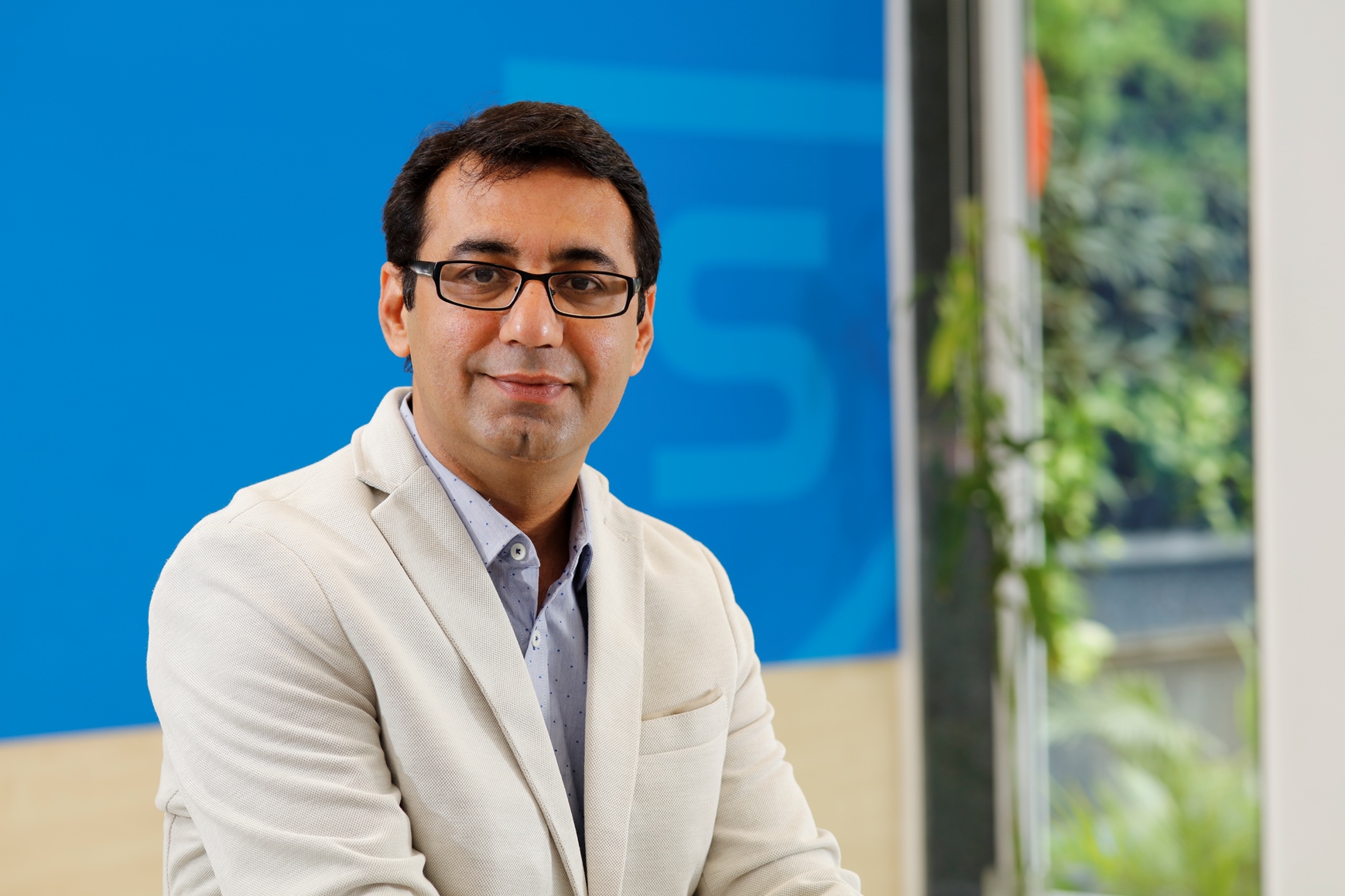General News
Preventing Your Network From Becoming a Botnet

By Harish Chib, vice president, Middle East & Africa, Sophos
“Not having sufficient network protection may allow your organization’s devices to be part of the next cyber-attack”
Botnets are large volumes of distributed networked computers and devices that have been taken over by a cybercriminal.
Botnets, also referred to as bots, are usually taken over by malicious software to enable remote control by a threat actor.
They are set up and developed by a hacker to provide a powerful and dark, cloud computing network to conduct cyberattacks of a criminal nature.
The growth in mobile and network devices has created large scale social and productivity benefits for us. We can now remotely access computers, security systems, cameras, appliances, and a growing list of devices, interconnected with cloud. Collectively this is referred to as the Internet of Things or IoT.
A worrying aspect of the growth of Internet-connected devices is the absence of basic security precautions.
Most end users rarely change factory defaults, which can be exploited by hackers to take control of the devices.
Another door for cybercriminals to take control of connected devices is called the back-door entry. This is a manufacturer’s access to the device through an undisclosed connection, used for remote testing and updates.
This large distributed, network of computers, under the control of threat actors, represents an aggregation of computing power that can be used for a devastating effect.
Inside the network
Malicious software designed to exploit IoT devices are usually not sophisticated. They operate by scanning network ports, looking for access opportunities, and gaining access through default credentials, or brute-force hacking to gain access.
This software is much easier to defend against, as it merely requires configuring the network firewall protection devices.
Similar to other malware, botnets can enter an organization through multiple points of entry. This includes email attachments, hacked web sites, connected sensors and other IoT devices, and USB sticks.
Once a malicious software has entered an organization, it will call home – the hackers command and control server – to register its success in gaining entry and to request further instructions.
It may be told to lie low and wait, or be instructed to move laterally on the network to infect other devices, or to participate in an attack.
This attempt by the malicious software to call-home represents an opportunity to detect infected systems on the network that are becoming part of a botnet.
Once an attack has got underway, the attack itself can be difficult to detect. From a network traffic point of view, the device will simply be sending emails out as spam, transferring data or mining bitcoins, or performing DNS lookups and a variety of other requests, usually seen in large scale attacks. In isolation, none of these types of activities are noteworthy.
Building protection
The most important ingredient for effective protection from botnets is the organization’s network firewall. The following can help to get best protection from the firewall.
· Advanced Threat Protection can identify botnets already operating on the network. Ensure the firewall has malicious traffic detection, botnet detection, and command and control, call-home traffic detection.
· Intrusion prevention can detect hackers attempting to penetrate and take over the network. Ensure the firewall has next-gen intrusion prevention system that is capable of identifying attack patterns inside the network.
· Sandboxing can pick up the latest malicious software before it reaches the organization’s computers. Ensure the organization firewall offers advanced sandboxing that can identify suspicious web or email files and activate them in a safe environment.
· Effective web and email protection can prevent malware from getting onto the network. Ensure the firewall has behavioral-based web protection that can simulate JavaScript code in web content to determine behavior before it reaches the browser.
· Ensure the firewall has top-shelf anti-spam and antivirus technology to detect malware in email attachments.
· Web Application Firewall can protect servers, devices, and business applications from being hacked. Ensure the firewall offers WAF protection for any system that requires remote access.
Best-practices
· Change the password for all your network devices to a unique complex password, and use a password manager if necessary.
· Minimize use of IoT devices and update all essential connected devices. Also disconnect unnecessary devices from the network and upgrade older devices to newer models.
· Avoid using IoT devices that require ports to opened in the network firewall or router to provide remote access. Instead, use cloud-based devices that connect only to the cloud provider’s servers and do not offer direct remote access.
· Do not enable UPnP on your firewall or router. This protocol enables devices to open ports on the firewall on demand without your knowledge increasing the surface area of attack.
· Use secure VPN technologies to manage your connected devices remotely.
Botnets have a massive slowdown effect on the global Internet traffic. They can also have a devastating impact on an organization, if the objective of the attack is to steal sensitive information. Even if the botnet operating on the organization’s network is not after its data, it could be using devices and network resources to cause devastating harm to another organization.
Do not let your network become part of the next global botnet attack.
General News
Cybersecurity Experts Seek Improvements to Maximise Protection

A study titled “Improving resilience: cybersecurity through system immunity” conducted by Kaspersky, explored how organisations currently manage cybersecurity and how they are preparing for future challenges.

This research surveyed 850 IT professionals responsible for cybersecurity in large companies across Europe, the Americas, APAC, Russia, and the Middle East, Turkiye, and Africa (META) region, including Saudi Arabia, United Arab Emirates, Turkey, Egypt, and South Africa.
These respondents represented a diverse range of industries and organisational levels, offering a comprehensive view of current security postures and pain points.
The survey reveals that, despite high satisfaction levels—with 94% of experts from the META region stating they are “satisfied” to “extremely satisfied” with their current protection—the desire for stronger and more adaptable defenses remains widespread.
Although only 6% of respondents from META expressed dissatisfaction with their cybersecurity measures, most recognise the need for improvement. Specifically, 64% believe there are “a few” or “some” areas that could be enhanced, while 35% advocate for significant upgrades.
When asked to identify the weakest aspects of their cybersecurity systems that they would like to improve, respondents from the META region pointed to various operational and technical challenges. The most common issues included:
- Manual processes consuming excessive time (31%)
- Reactive protection lacking proactive threat detection (28%)
- Shortage of skilled personnel (28%)
The reliance on manual processes leads to increased operational overhead and delays in identifying and responding to threats, while the absence of proactive threat detection reduces the ability to prevent breaches before they occur.
Among other critical weak sides of their current cybersecurity systems noted by respondents in the META region were high risks of systemic collapse following breaches (24%), overly complex IT/OT environments (22%), and outdated threat intelligence (21%).
Additional concerns included “alert fatigue” (22%) and insufficient functionality of current solutions (19%), complexity of managing disparate solutions (19%), and poor control over security policy implementation (19%).
The management of multiple different security solutions leads to gaps in coverage, misconfigurations, and increased risk of oversight, as security teams struggle to maintain an integrated, effective defense across diverse systems.
The fragmentation hampers swift response times and increases the likelihood of overlooked vulnerabilities, ultimately weakening the organisation’s overall security posture.
These findings highlight the urgent need for streamlined intelligent security tools to address these vulnerabilities effectively.
As organisations worldwide strive to strengthen their cybersecurity posture, this research highlights that, alongside enhancing traditional cybersecurity solutions, vendors are working to develop innovative approaches: shifting from protecting inherently vulnerable software with applied security measures toward creating secure-by-design systems with innate resilience. Such systems are capable of safeguarding their core assets even when compromised, often with minimal or no additional cybersecurity spending.
“More and more organisations are beginning to understand that modern challenges require not just strong protection but also a proactive and cohesive security strategy that strengthens every aspect of their digital landscape against potential breaches.
“That’s why it is essential for companies to adopt a transformative approach, integrating advanced threat intelligence and streamlined processes, and applying reliable, all-encompassing solutions to protect their assets while ensuring operational continuity and building customer trust,” says Alexander Kostyuchenko, Head of Technology Solutions Product Line at Kaspersky.
General News
NCAA Orders Airlines to Enforce $10,000 Currency Declaration Rule

The Nigeria Civil Aviation Authority has ordered all international airlines flying into Nigeria to enforce the $10,000 currency declaration rule.

The authority said the rule is required for passengers to declare cash or negotiable instruments above the limit, as part of efforts to strengthen anti-money laundering compliance.
According to the NCAA, the directive, referenced as NCAA/CPD/ABV/298, dated 24 April 2025 seeks to address gaps in the enforcement of existing currency declaration obligations for inbound passengers.
This was announced in a statement issued by the Director of Public Affairs and Consumer Protection, Michael Achimugu, via his official X account on Tuesday.
“International carriers must take two key actions, which include “Make inflight or pre-landing announcements informing passengers of their legal obligation to declare any currency or Bearer Negotiable Instruments exceeding $10,000 USD or its equivalent upon arrival in Nigeria.
“Distribute currency declaration forms onboard for passengers to complete before landing. The NCAA has received reports indicating that some airlines are yet to comply with this directive”, the statement read.
The NCAA said these requirements are consistent with international best practices and are vital to preventing the illegal movement of large sums of money across borders.
The Authority warned that full cooperation from international airlines is essential, saying, “Please note that the cooperation of all international airlines operating in Nigeria is critical to supporting the country’s efforts to align with global financial standards.”
Accordingly, the authority emphasised that full implementation of this directive, particularly as it concerns inbound passenger declarations, is of utmost importance.
“Compliance will be closely monitored, and non-compliant airlines will face appropriate sanctions,” it added.
General News
Appeal Court Nullifies Registration of ‘KPMG Professional Services’

The court of appeal in Lagos has asked the Corporate Affairs Commission (CAC) to revoke the certificate of registration of “KPMG Professional Services”.

In a unanimous decision delivered on Thursday, the appellant court granted the reliefs sought by KPMG Nigeria against CAC and KPMG Professional Services.
The judgment was read by Abdullahi Mahmud Bayero, the judge.
The two other judges are Abimbola Obaseki-Adejumo and A.M. Talba.
In 2002, KPMG Professional Services was registered as a company with CAC despite the existence of KPMG Nigeria, comprising its audit, tax, and consulting arms.
The KPMG Nigeria has long been registered in Nigeria before 2002.
KPMG Audit was registered in 1969, KPMG Tax Consultants in 1990, and KPMG Consulting in 1969.
Displeased with the registration of KPMG Professional Services, KPMG Nigeria approached the federal high court.
The consulting firm had argued that the name “KPMG Professional Services” was deceptively similar to its long-established identity.
In 2005, the lower court dismissed KPMG Nigeria’s case, citing an alleged merger between KPMG Nigeria and Akintola Williams Deloitte as reason the company could no longer assert rights to the name.
The lower upheld the second respondent’s (KPMG Professional Services) counterclaim and ordered that KPMG Nigeria’s name be struck off the CAC register.
The lower court had premised its decision on newspaper articles stating that KPMG Nigeria reportedly merged with Akintola Williams Deloitte.
Delivering the judgment, Bayero ruled that the lower court erred by relying on newspaper articles to ascertain that KPMG Nigeria allegedly merged with another company.
The judge said the documents showing the alleged merger were not presented before the lower court, and the form of the alleged merger could not have been known.
“In any event, the only branch of KPMG, if any, that entered into a merger with Akintola Williams as stated in the newspaper articles 18, is KPMG Audit,” the judge ruled.
“The other spheres were totally unaffected. It would therefore be wrong to state that the merger (which has not been shown to this Court) of KPMG Audit with Akintola Williams means all the other areas of business, including KPMG Consulting and KPMG Tax Consultants, also ceased to exist.
“Even if the Appellants (KPMG Nigeria) had ceased to do business as the Court seemed to have held, the 2nd Respondents (KPMG Professional Services) should not have been carrying on business until the Appellant’s certificate of registration is withdrawn or set aside.
“They cannot use the name until the Appellant’s certification of registration is withdrawn or set aside. They cannot use the name until the name is removed from the 1st Respondent’s (CAC) Register of Names.
“The 1st Respondents can only assign the name to the 2nd Respondents after first taking it away from the Appellants.”
The court ruled that CAC erred by registering KPMG Professional Services despite the existence of a business name, which is already registered.
The judge reversed the earlier ruling of the lower court and reaffirmed the primacy of statutory protection for existing business names under Nigerian corporate law.

 Telecom2 days ago
Telecom2 days agoMTN Nigeria Rewards 1,500+ Winners with ₦290m in Mega Billion Promo

 E-Financial2 days ago
E-Financial2 days agoNaira Slides Again, Hits ₦1,532.34/$ Despite CBN’s Dollar Push

 E-Business2 days ago
E-Business2 days agoMicrosoft Server Hack Likely Solo Actor, Thousands at Risk

 E-Business2 days ago
E-Business2 days agoFlaw in Microsoft SharePoint Sparks Global Cybersecurity Concern

 Telecom2 days ago
Telecom2 days agoMENXTT Tech NG Debuts USA-Spec Devices and Redefines IT Retail in Nigeria

 E-Financial2 days ago
E-Financial2 days agoReps Investigate 25 Insurance Firms for Financial Infractions

 E-Financial2 days ago
E-Financial2 days agoFidelity Bank to Empower 100 SMEs Across Nigeria with Digital Tools

 Telecom2 days ago
Telecom2 days agoMTN, MTV Base Launch “Room of Safety” Series to Promote Online Child Safety
























